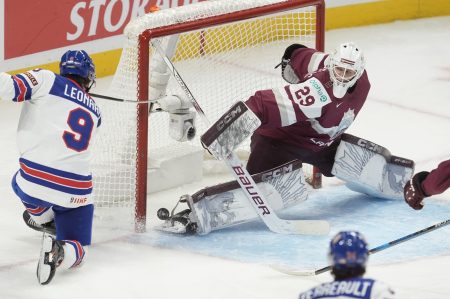Ebba Andersson, a prominent Swedish cross-country skier, expressed disappointment after a subpar performance in the sprint qualification round, finishing 13.15 seconds behind the surprise winner, Federica Cassol of Italy. Andersson admitted to struggling to maintain focus, attributing her slow pace to a lack of concentration. While feeling disheartened by the result, she vowed to regroup and refocus her energy for the upcoming races. This setback marks a rare misstep for Andersson, who typically excels in distance events and has been a consistent force on the World Cup circuit. The unexpected outcome underscores the unpredictable nature of sprint competitions, where even the slightest lapse in focus or technical execution can significantly impact the final result.
The qualification round saw a mixed bag of results for the Swedish team. While Andersson faltered, the remaining Swedish women successfully advanced to the next stage. This included strong showings from Johanna Hagström, who secured the second-fastest qualifying time, and Linn Svahn, who finished fourth. Moa Lundgren, Märta Rosenberg, Moa Ilar, and Maja Dahlqvist also secured spots in the subsequent rounds, demonstrating the overall depth and strength of the Swedish women’s sprint team. Their successful qualification offered a silver lining to Andersson’s disappointment, reinforcing Sweden’s competitive presence in the sprint discipline despite her individual setback.
Federica Cassol’s victory marked a significant upset, highlighting the unpredictable nature of sprint competitions and the potential for unexpected breakthroughs. Her triumph underscores the importance of seizing opportunities and performing at peak levels, even against more established competitors. Cassol’s win undoubtedly injects excitement and intrigue into the competition, raising questions about her ability to maintain this momentum in the later rounds. It also casts a spotlight on the evolving dynamics within women’s cross-country skiing, where new contenders are constantly emerging and challenging the established hierarchy.
The sprint qualification also witnessed the return of Norwegian skiing legend Therese Johaug to sprint competition after a 1,492-day hiatus. However, her comeback was short-lived as she failed to qualify, finishing in 40th place. Johaug, renowned for her dominance in distance events, has historically prioritized longer races, making her participation in the sprint a rare occurrence. While her early exit was not entirely unexpected given her focus on other disciplines, it nonetheless marked a quiet return to a format where she has not traditionally shone.
Johaug’s result further emphasizes the specialized nature of sprint skiing, requiring a distinct skill set and tactical approach compared to distance events. The explosive power, technical precision, and tactical maneuvering demanded by sprint racing differ significantly from the endurance and pacing strategies crucial for success in longer distances. This highlights the challenge faced by athletes like Johaug who primarily focus on distance events and choose to compete in sprints, often requiring a significant shift in training and preparation.
In summary, the sprint qualification round presented a mix of triumphs and setbacks, highlighting both the unpredictable nature of sprint competitions and the varying fortunes of individual athletes. From Andersson’s disappointment to Cassol’s surprising victory and Johaug’s quiet exit, the results underscored the dynamic and ever-evolving landscape of cross-country skiing. The contrasting performances serve as a reminder of the intricate balance of factors that contribute to success in elite-level competition, encompassing physical prowess, tactical acumen, mental fortitude, and the ability to perform under pressure. The remaining rounds promise further excitement and intrigue as the qualified skiers battle for a place on the podium.














